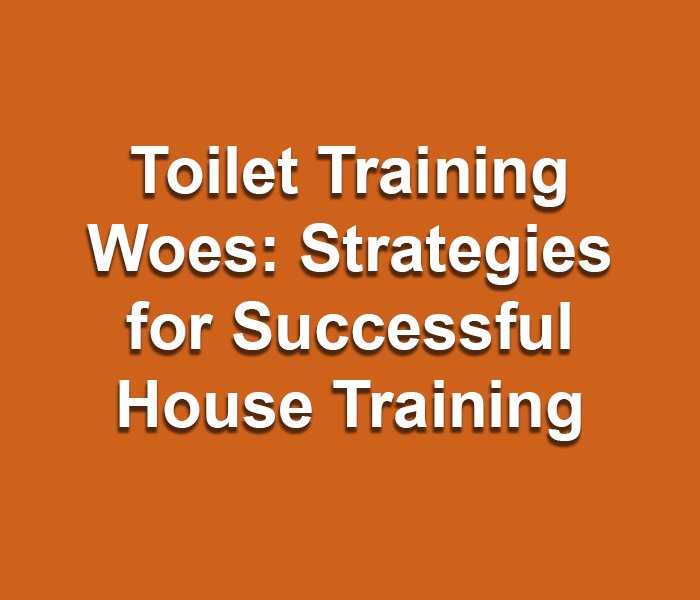Introduction:
Toilet training, also known as house training, is an essential step in ensuring a harmonious living environment with your furry friend. It can be a challenging process, but with patience, consistency and the right techniques, you can successfully teach your dog to do its business in appropriate outdoor areas. In this blog post, we will discuss effective strategies for tackling toilet training woes and achieving successful house training.
Understanding the Basics of House Training:
- The importance of house training: Discover why house training is crucial for the well-being of both you and your dog. It promotes cleanliness, prevents accidents indoors and establishes proper toilet habits.
- Timing and readiness: Learn about the ideal age and signs of readiness to begin house training. Understanding your dog’s physical and behavioral cues will help you set realistic expectations.
Establishing a Routine:
- Consistent schedule: Establish a consistent daily routine for feeding, toilet breaks and walks. A predictable routine helps your dog anticipate and develop regular toilet habits.
- Regular outdoor trips: Take your dog outside frequently, especially after meals, naps, playtime and waking up in the morning. Consistency in providing outdoor opportunities reinforces the association between outdoor spaces and toilet needs.
Positive Reinforcement and Reward System:
- Praise and treats: Use positive reinforcement techniques to reward your dog for relieving in the appropriate outdoor areas. Verbal praise, gentle petting and small treats create positive associations and motivate your dog to repeat the desired behavior.
- Timing is key: Ensure that you praise and reward your dog immediately after they finish relieving in the designated spot. This reinforces the connection between the action and the reward.
Supervision and Management:
- Close supervision: Keep a close eye on your dog, especially during the initial stages of house training. Watch for signs of sniffing, circling or restlessness, indicating the need to relieve.
- Confinement and crate training: Utilize confinement techniques, such as crate training or using baby gates, to limit your dog’s access to the house when you cannot actively supervise them. This helps prevent accidents and gives you better control over their toilet habits.
Consistency and Patience:
- Stay consistent: Stick to the established routine and training techniques throughout the house-training process. Consistency helps your dog understand the expectations and reinforces good habits.
- Avoid punishment: Never punish or scold your dog for accidents indoors. Negative reinforcement can lead to fear, anxiety and setbacks in the house-training process. Instead, focus on positive reinforcement and redirecting their behavior to the appropriate outdoor area.
Cleaning and Accident Management:
- Proper cleaning: Accidents may happen during the house-training process. Use pet-friendly enzymatic cleaners to thoroughly clean any indoor accidents. This eliminates residual odors that may attract your dog back to the same spot.
- Accident management: If you catch your dog in the act of relieving indoors, calmly interrupt them and immediately take them outside to their designated spot to finish. Avoid shouting or startling them, as this can create confusion and anxiety.
Conclusion:
Toilet training your dog requires patience, consistency and a positive approach. By understanding the basics of house training, establishing a routine, using positive reinforcement techniques, closely supervising your dog and practising patience throughout the process, you can overcome toilet training woes and achieve successful house training. Remember, accidents may occur, but with perseverance and a proactive approach, you can guide your dog towards developing proper toilet habits and enjoying a clean and comfortable living environment together.

